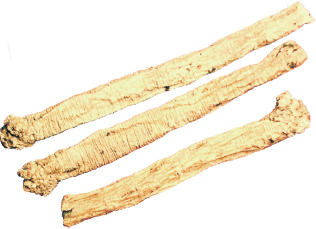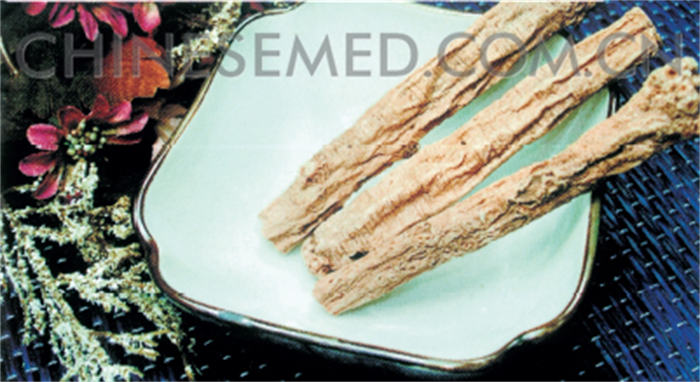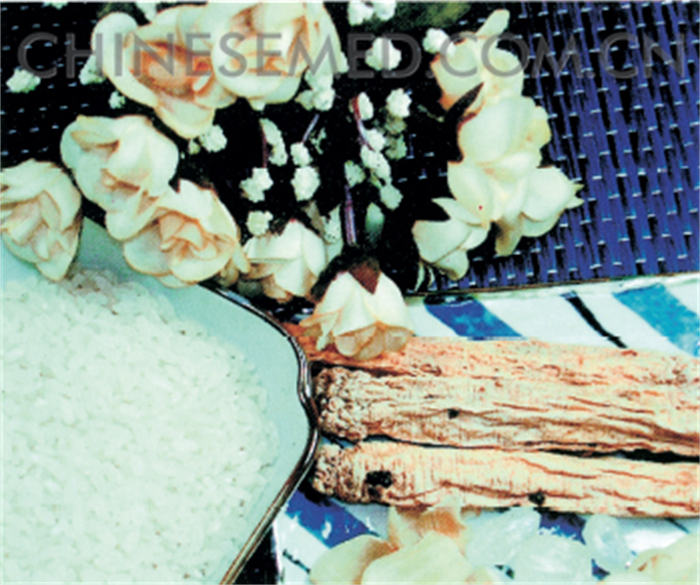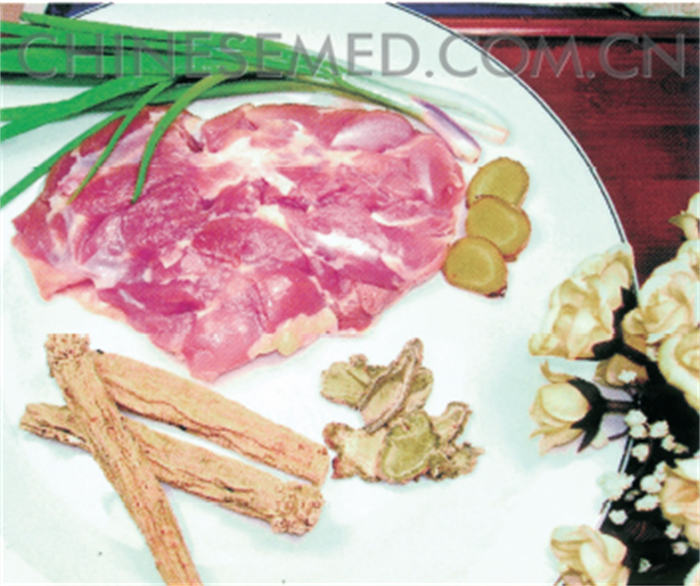

Source Codonopsis Root is the dried root ofCodonopsis. pilosula (Franch.) Nannf., and other several species of the same genus, (Fam. Companulaceae).
Producing Areas Shanxi, Shaanxi, Gansu, Sichuan, etc.
Properties Sweet, Neutral
Channels Spleen, Lung
Action
Supplements middle-jiao energy, benefits the lungs, promotes the production of body fluid, nourishes blood
- For insufficiency of middle-jiao energy manifested as poor appetite, loose stools and fatigue.
- For metrorrhagia, hypermenorrhea, hematemesis, hemoptysis, and hemafecia due to the failure of controlling blood by the spleen.
- For lung-energy deficiency with dyspnea, cough, shortness of breath and speaking in a weak voice.
- Also for skin infection, common cold in energy-deficiency patients, diabetes, and febrile diseases with consumption of body fluid and thirst.
Usage and Dosage
10 – 15g or up to 30g is decocted for oral use.
- Crude Dangshen: For consumption of both qi and the body fluid, deficiency of qi and blood.
- Stir-baked Dangshen: For diarrhoea due to deficiency of the spleen, visceroptosis with hyposplentic qi (descending of qi in the spleen and stomach).
- Toasted Dangshen with honey: For cough with dyspnea due to deficiency of the lung.
Notes It is incompatible with Lilu (Rhizoma et Radix Veratri). Use with caution in the case with hyperactive fire and stagnation of qi without deficiency.


 The root is cylinder-shaped, slightly curved, 10 – 35cm in length, 0.5 – 2.5cm in diameter. Its surface is yellow brown to ash brown with longitudinal wrinkles and crosswise long pores, wart-like stem marks and buds sticking out from the end of the root. Wild Dangshen has crowded circles enclosing its upper half root. It is slightly hard and tough with some fractures and radial texture on the broken surface. The skin is light yellowish white to pale brown while the wooden part is light yellow.
The root is cylinder-shaped, slightly curved, 10 – 35cm in length, 0.5 – 2.5cm in diameter. Its surface is yellow brown to ash brown with longitudinal wrinkles and crosswise long pores, wart-like stem marks and buds sticking out from the end of the root. Wild Dangshen has crowded circles enclosing its upper half root. It is slightly hard and tough with some fractures and radial texture on the broken surface. The skin is light yellowish white to pale brown while the wooden part is light yellow.

- The root is larger and thicker.
- The surface is yellowish-white to greyish-yellow.
- The skin part is greyish-white to pale brown on the broken surface.

- It is slender, 10 – 45cm long.
- The surface is greyish-yellow to pale brown with apparent irregular longitudinal grooves.
- Dangshen is soft and dense.
Storage
Keep in a dry and ventilated place.
Protect it from moths and mould.
Description of Quality Herb
Good Dangshen is thick in size, soft and moist with strong fragrance, without dregs left after chewing. The best Dangshen called Xidang is produced in Shanxi.
 Pilose Asiabell Root and Lily Bulb Congee
Pilose Asiabell Root and Lily Bulb Congee

Effects
Nourishes the spleen, moistens the lungs and alleviates coughing. It is particularly beneficial to children suffering from pneumonia and other respiratory ailments associated with heat deficiency.
Ingredients
Pilose asiabell root 10 – 30g, lily bulb 20g, japonica rice 100g, rock sugar to taste.
Preparation
1.Pan-fry the asiabell root with water to extract its essence.
2.Cook the lily bulb and japonica rice as congee. Add the asiabell extract and rock sugar, and serve.
 Asiabell and Pseudoginseng Stewed Chicken
Asiabell and Pseudoginseng Stewed Chicken

Effects
Beneficial to patients suffering from angina pectoris caused by lack of blood. It improves heart functions and promotes blood flow to the heart.
Ingredients
Codonopsis 15g, pseudoginseng 10g, chicken meat 100g, seasonings to taste: onions, ginger, salt, cooking wine.
Preparation
1.Grind the pseudoginseng to a fine powder. Slice the asiabell and place in a cloth bag.
2.Place the asiabell bag in a pot with the chicken and add water. Add seasonings and simmer until the meat becomes tender.
3.Toss with the ground pseudoginseng and serve.

